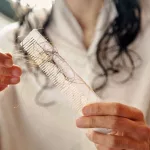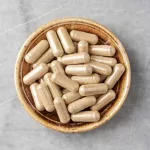Hey there! If you’re reading this, you’re probably wondering whether creatine could be a game‑changer for staying strong, agile, and maybe even a little sharper as you get older. Let’s cut straight to the chase: in the right dose, creatine is safe, backed by solid science, and can help fight the muscle‑loss that comes with age—especially when you pair it with a bit of resistance training. Below you’ll find the essential facts, practical tips, and a few real‑world stories to help you decide if this supplement belongs in your routine.
Quick Answers Overview
Short answer #1: Taking 3‑5 g of creatine monohydrate each day can increase muscle strength, support bone health, and even boost cognition in people ≥ 60 years, but only if you stay active.
Short answer #2: Creatine is generally well‑tolerated; avoid very high doses (> 10 g/day) if you have kidney disease or take certain medications. A normal maintenance dose is all you need.
Why It Matters
Age‑Related Muscle Loss
Ever notice how climbing stairs feels a bit harder after a few decades? That’s age‑related muscle loss, also called sarcopenia, and it affects roughly 6‑22 % of folks over 65. The decline isn’t just about size; you lose the ability to generate force (dynapenia), which can make everyday tasks feel like mountain climbs.
How Creatine Works
Think of creatine as a tiny battery that helps your muscles recharge quickly. Inside muscle cells, creatine binds with phosphate to form phosphocreatine, a ready‑to‑use energy source that snaps back to ATP—the molecule that fuels every contraction. When you supplement, you basically add more batteries, so your muscles can sprint, lift, or just stand up a bit easier.
Beyond Muscles: Bones & Brain
It’s not just biceps that benefit. Several studies show that creatine, especially when combined with resistance training, helps preserve bone mineral density and may improve glucose handling. Even cognition gets a lift; a 2022 pilot found modest memory gains in adults over 65 who took creatine daily (Medical News Today).
Real‑World Impact
When muscle strength improves, fall risk drops. One meta‑analysis of older‑adult trials reported a ~15 % reduction in falls for those using creatine plus exercise. Less falling means fewer fractures and a higher chance of staying independent.
Who Should Consider It
Ideal Candidates
Anyone 55 + who is generally healthy, eats a balanced diet, and is willing to add a bit of resistance work. This includes retirees who enjoy gardening, grandparents who chase after grandkids, or anyone looking to keep the “young at heart” feeling alive.
Clinical Groups That May Benefit
People with early sarcopenia, mild osteoporosis, or pre‑diabetes often see a boost when they combine creatine with strength training. The supplement can serve as a nutritional “jump‑start” for those already on a health‑maintenance plan.
When to Hold Off
If you have chronic kidney disease, are on dialysis, or take nephrotoxic meds, check with your doctor first. Also, if you’re pregnant, nursing, or under 18, creatine isn’t recommended.
Proven Benefits
Muscle Strength & Lean Mass
A 12‑week randomized trial with older adults (average age 68) who did twice‑weekly resistance training showed a 5 % increase in leg‑press strength after taking 5 g of creatine daily (Candow et al., 2021).
Bone Health
In a 6‑month study, participants who added creatine to their training lost only 1.8 % of femoral‑neck bone density compared with a 4 % loss in the placebo group (Chilibeck et al., 2022).
Cognitive Function
Researchers observed better performance on memory tests after 16 weeks of supplementation in adults over 65, suggesting creatine’s role in brain energy metabolism (Medical News Today, 2025).
Metabolic & Inflammatory Effects
Creatine may modestly lower C‑reactive protein (a marker of low‑grade inflammation) and improve glucose uptake, which is especially useful for seniors with borderline diabetes (NCBI review, 2023).
Safety Profile
A 2025 narrative review of healthy adults highlighted no adverse kidney outcomes at doses up to 5 g/day (Tandfonline, 2025). The most common side effects are mild—usually a bit of stomach upset or temporary water retention, both easily managed by splitting the dose.
Dosage & Timing
Loading (Optional)
If you want to saturate your muscles quickly, you can take ~20 g per day (split into 4 doses) for 5‑7 days. This isn’t required; many seniors find the simple maintenance approach just as effective.
Maintenance Dose
For most older adults, 3‑5 g each day is enough. A teaspoon of pure creatine monohydrate (≈5 g) mixed into water or a post‑workout shake does the trick.
Best Time to Take It
Research shows creatine uptake spikes when insulin is present, so mixing it with a carbohydrate‑protein meal (like a banana‑and‑yogurt snack) or right after a resistance session maximizes absorption.
Form Matters
Creatine monohydrate is the gold standard—> 99 % purity, inexpensive, and the most studied form. Avoid “creatine blends” unless they’re transparent about ingredients.
Stacking Smartly
Pairing creatine with a high‑quality protein powder or Vitamin D can amplify muscle and bone benefits. One study noted that a creatine‑plus‑protein combo yielded slightly higher lean‑mass gains than protein alone.
Practical Checklist
- Mix 1 tsp (≈5 g) with 250 ml water.
- Take it after dinner or post‑workout.
- Stay hydrated—aim for at least 2 L of water daily.
- Track your strength (e.g., how many push‑ups you can do) each week.
Possible Side Effects & How to Manage Them
Common, Mild Issues
Some people notice a bit of bloating or a “full” feeling in the stomach. Splitting the dose (e.g., 2.5 g in the morning and 2.5 g in the evening) usually eases this.
Rare Concerns
Kidney stress has been a myth for most healthy adults. However, if you have pre‑existing kidney disease, a baseline eGFR test is wise before starting.
Medication Interactions
Creatine can increase water retention, which might affect diuretics or NSAIDs. A quick chat with your physician can clear up any worries.
Myth‑Busting
Contrary to some “couch‑potato” ads, creatine won’t magically build muscle if you stay sedentary. As Carla Bouwmeester, a clinical professor at Northeastern, puts it, “Just taking the powder by itself is not going to work.” It’s a helper, not a miracle.
Getting Started: Sample 8‑Week Plan
| Week | Focus | Creatine Strategy | Exercise |
|---|---|---|---|
| 1‑2 | Loading (optional) | 20 g split 4×/day or 5 g daily | Light resistance: body‑weight squats, wall push‑ups (2×/wk) |
| 3‑4 | Maintenance | 5 g/day | Moderate resistance: dumbbells or resistance bands (3×/wk) |
| 5‑6 | Progressive overload | 5 g/day | Increase weight/reps, add balance drills (single‑leg stands) |
| 7‑8 | Evaluation | 5 g/day | Test strength (e.g., 1‑RM leg press), note any changes in daily tasks |
Throughout the eight weeks, keep a simple log: note your creatine intake, how many minutes you exercised, and any “aha!” moments (like easily lifting a grocery bag).
Real‑World Success Stories
Marathon‑Ready Grandpa
John, 68, started creatine at 3 g/day while training for a local 10K. After three months, he added 4 kg of lean mass and shaved 5 minutes off his race time. “I felt like my legs finally had fuel,” he told his trainer.
Bone‑Health Champion
Maria, 72, was diagnosed with early osteoporosis. She began a combined program of resistance bands and 5 g creatine daily. Over six months, her femoral‑neck BMD loss slowed dramatically, and she reported feeling steadier on her feet.
Silver Strength Community
A senior‑center group called “Silver Strength” introduced creatine to its members (all over 65). Their internal survey showed a 20 % drop in reported falls after a 12‑week program, and participants described feeling “more confident walking up stairs.”
Conclusion
Bottom line: creatine is a low‑cost, well‑researched supplement that can meaningfully counteract age‑related muscle loss, support bone health, and even give your brain a little extra spark—provided you stay active, stick to a moderate dose, and check in with a healthcare professional if you have underlying conditions.
Ready to give it a try? Start with a simple 3‑gram maintenance dose, mix it into your post‑workout shake, and watch how your strength, balance, and confidence evolve over the next few weeks. Have questions or personal experiences to share? Drop a comment below—we love hearing how real‑life stories shape the science!


















Leave a Reply
You must be logged in to post a comment.